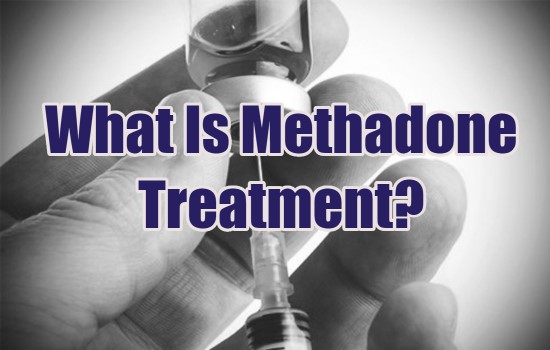Methadone Clinics Dellwood MO
Home
Methadone Clinics Dellwood MO Resources
The only cases where it should be used is it if it is prescribed by a doctor for harrowing conditions when the doctor believes that the drug is the only suitable drug, or for replacement therapy for opioid treatment. The efforts of patients who are seeking rehabilitation, and clinic professionals who serve them, are significantly undermined by this criminal activity that surrounds them." [2] Relapse rates are high in patients who discontinue methadone maintenance, between 70-90%[3] The high relapse rate may be partially due to the severity of cases seen at methadone clinics, as well as the long-term effects of opioid use. The two active ingredients in Suboxone® are buprenorphine hydrochloride, and naloxone hydrochloride dihydrate. Methadone usage history is considered in interpreting the results as a chronic user can develop tolerance to doses that would incapacitate an opioid-naive individual.
As of 2013 due to the strict changes in receiving prescription pain medication as well as decreases in prescription abuse the requirements to be accepted into methadone clinics have changed in areas such as New York State. Upon discontinuation of phenytoin, the incidence of withdrawal symptoms decreased and methadone exposure increased to a level comparable to that prior to phenytoin administration. These include: Slow breathing Long pauses between breaths Breathlessness Pounding heartbeat Low blood pressure Swelling of the eyes, face, mouth, throat, or tongue Dizziness or feeling light-headed Fainting Prolonged QT interval, a cardiac complication that can cause irregular heartbeat, dizziness, fainting, or sudden death Seizures Hallucinations Pinpoint pupils Clammy or blue skin, bluish lips or fingernails If left untreated, these side effects can send a person into a coma or worse, cause death.
More Resources For quitting methadone

Right here are Some More Information on methadone maintenance treatment side effects Dellwood MO
If you miss your doses for longer than 3 days in a row, call your doctor for instructions. For Maintenance Treatment Patients in maintenance treatment should be titrated to a dose at which opioid symptoms are prevented for 24 hours, drug hunger or craving is reduced, the euphoric effects of self-administered opioids are blocked or attenuated, and the patient is tolerant to the sedative effects of methadone. Deaths have been reported during conversion from chronic, high-dose treatment with other opioid agonists. Those who are interested in using methadone as a means of beating an opioid addiction must consult with an experienced medical professional. If you've got a co-occurring disorder such as depression or bipolar disorder, you'll likely be given psychotherapy and possibly medication assistance to help you through the process. The physician should not confuse such symptoms with those of narcotic abstinence and should not attempt to treat anxiety by increasing the dose of methadone.
More Information About quitting methadone
The dextrorotary form (dextromethadone), which acts as an NMDA receptor antagonist and is devoid of opioid activity, has been shown to produce analgesia in experimental models of chronic pain. Accidental or deliberate ingestion by a child may cause respiratory depression that can result in death. Food and Drug Administration by visiting www.fda.gov/medwatch or by calling 1-800-FDA-1088.
Even more Details About quitting methadone Dellwood MO
It also depends on how long the person has been using the drug(s) and the method (i.e. oral, inhaled, or injected).[16][17] In addition, enrollment in methadone maintenance has the potential to reduce the transmission of infectious diseases associated with opiate injection, such as hepatitis B and C, and/or HIV.[16] The principal goals of methadone maintenance are to relieve opioid cravings, suppress the abstinence syndrome, and block the euphoric effects associated with opioids. Methadone is available in many forms, including: Oral tablets Oral solution Injection In today’s day and age, most people prefer oral tablets or solution as it is much easier to administer. If pain is increasing, you need to be re-evaluated. ... Palm Partners was founded in 1994 and was incorporated in Florida in the year 2003.Comprehensive Behavioral Health Center Denver, Colorado - WALK-IN WELCOME - NO WAITING LIST - ADMISSION WITHIN 24 HOURS - PRIVATE PAY & MEDICAID Dispensing Hours : Mon-Fri 5:30am-12pm Sat 7am-10am Sun CLOSED 2217 Champa St Denver, CO 80205 Tel: (720)-398-9666 Fax: (720)-502-5082 Contact Us Comprehensive BHC Is Your Journey To Recovery Located in Denver Downtown Comprehensive Behavioral Health Center is an outpatient clinic specifically designed for persons addicted to the opioid class of drugs, including prescription pain medications and Heroin. Methadone usage history is considered in interpreting the results as a chronic user can develop tolerance to doses that would incapacitate an opioid-naive individual. The dose of methadone can be decreased on a daily basis or at 2-day intervals, but the amount of intake should remain sufficient to keep withdrawal symptoms at a tolerable level. Common side effects that can occur with methadone include anxiety, nervousness, restlessness, insomnia, weakness, drowsiness, dry mouth, nausea, vomiting, diarrhea, constipation, loss of appetite, and decreased sex drive. Patients seeking to discontinue treatment with methadone for opioid dependence should be apprised of the high risk of relapse to illicit drug use associated with discontinuation of methadone maintenance treatment. That coupled with the health problems associated with it and the lifestyle of being opiate dependant causes health problems that have to be dealt with. Short-Term Effects of Methadone Short-term effects of methadone can include the following: Feelings of euphoria. Those who are interested in using methadone as a means of beating an opioid addiction must consult with an experienced medical professional.
Click Here for More Information
Previous Next
You may also like:
Methadone Clinics Winchester MA
Methadone Clinics Thousand Oaks CA
Methadone Clinics La Marque TX
Methadone Clinics Morrow GA
Methadone Clinics Detroit MI